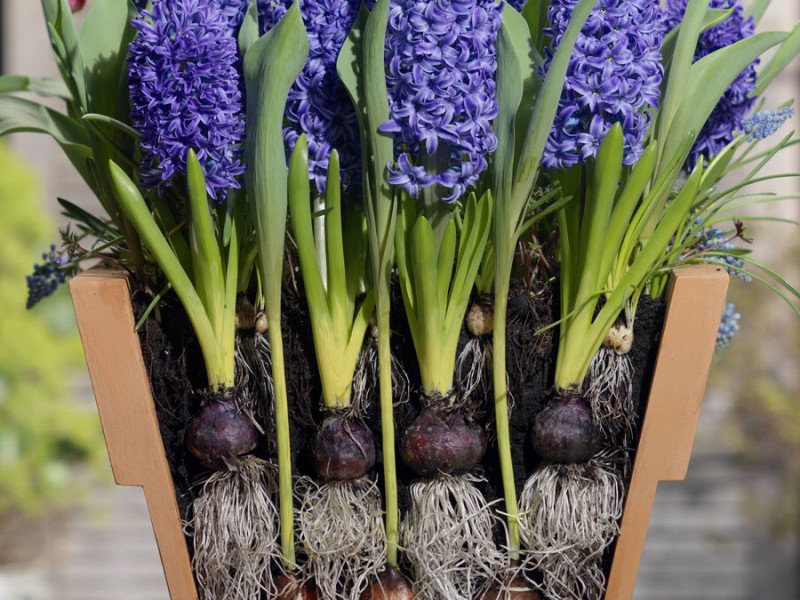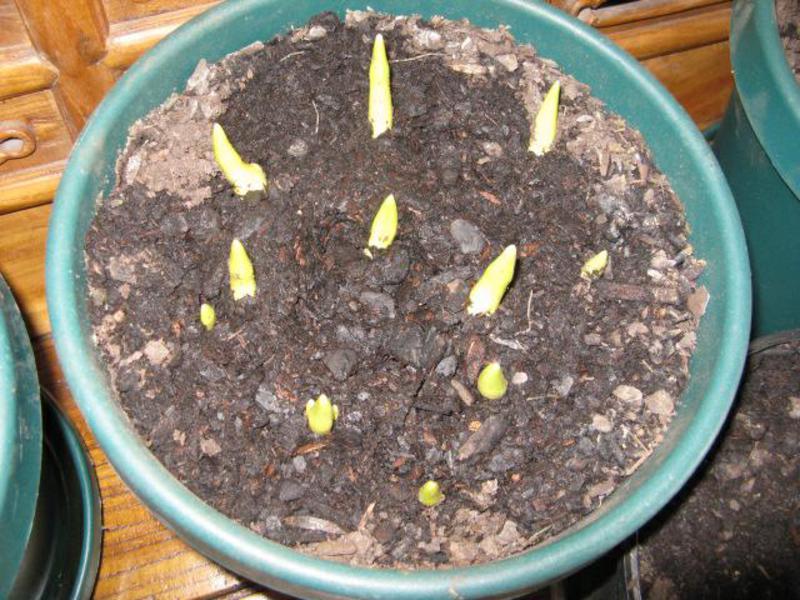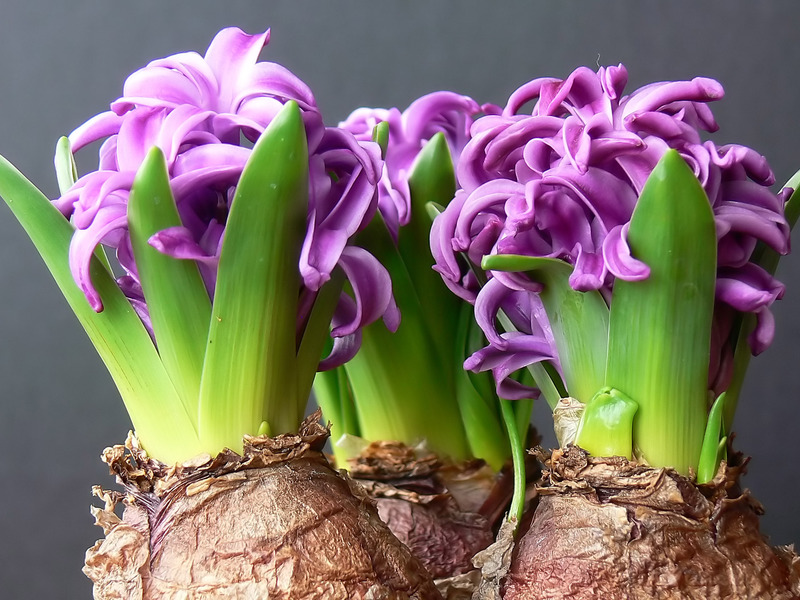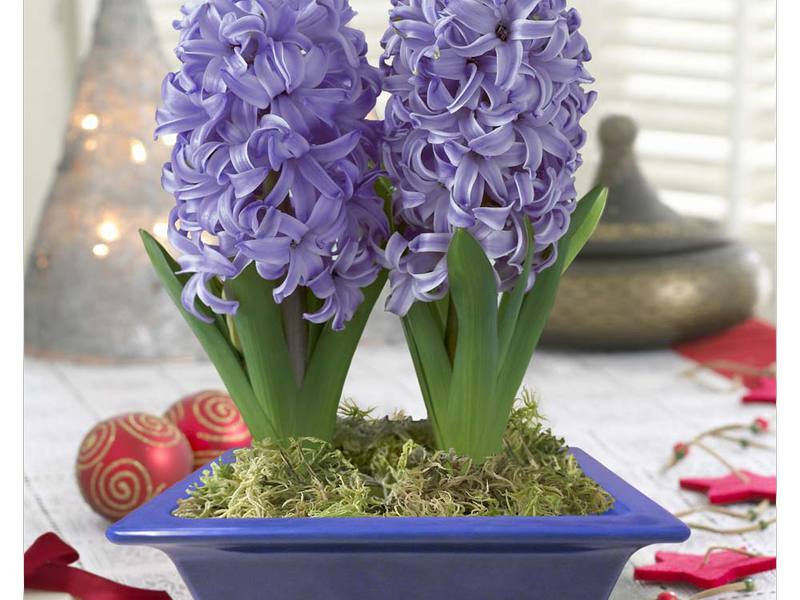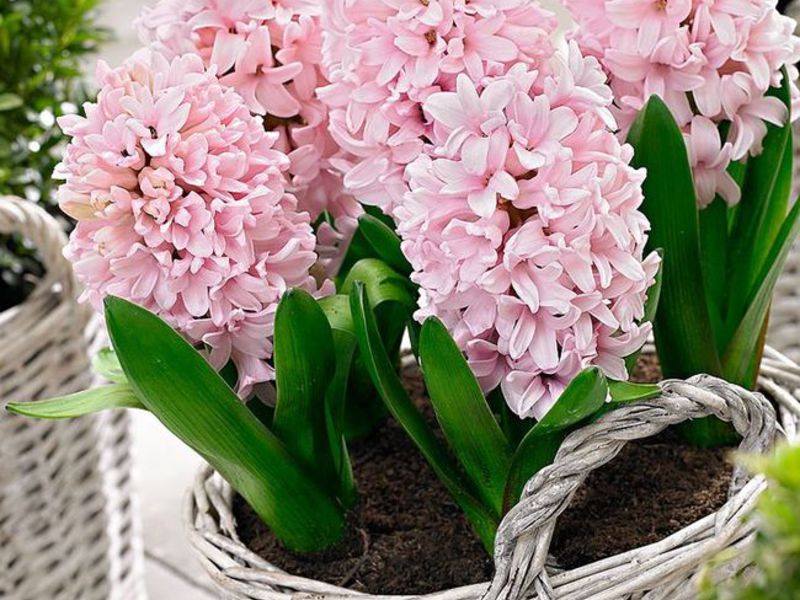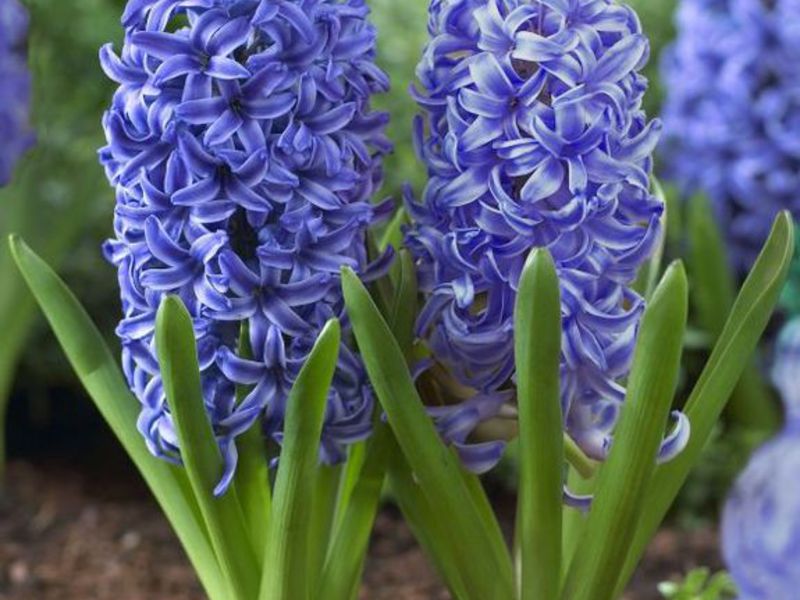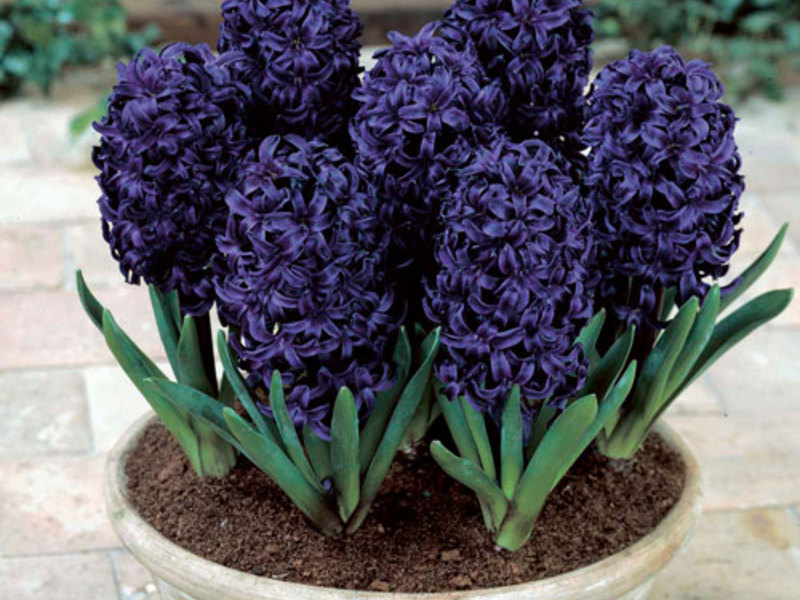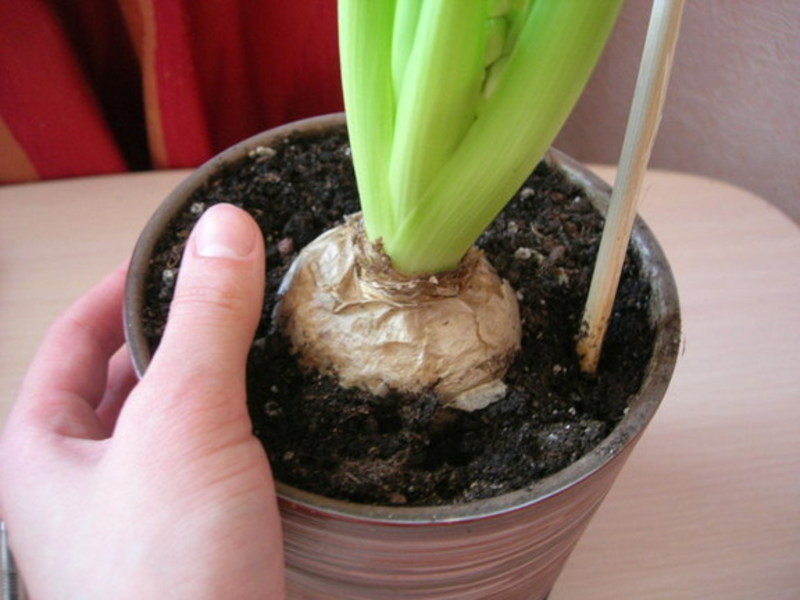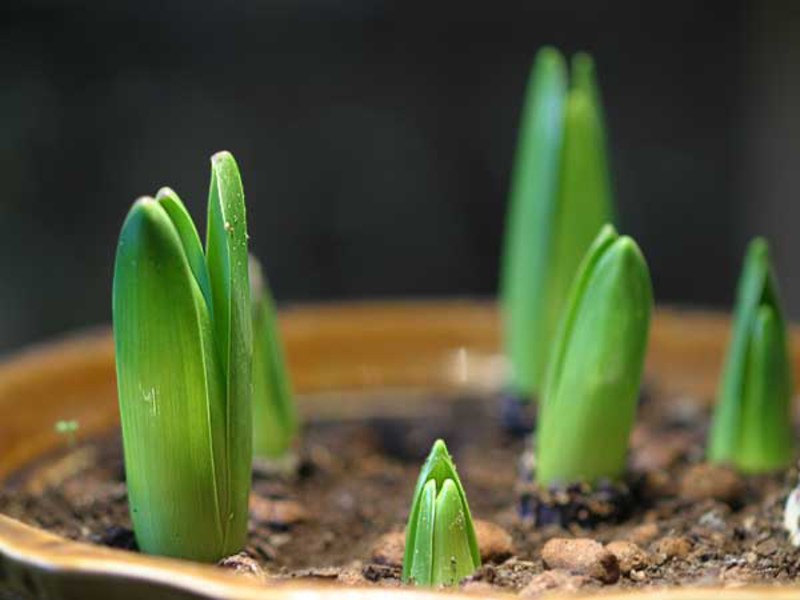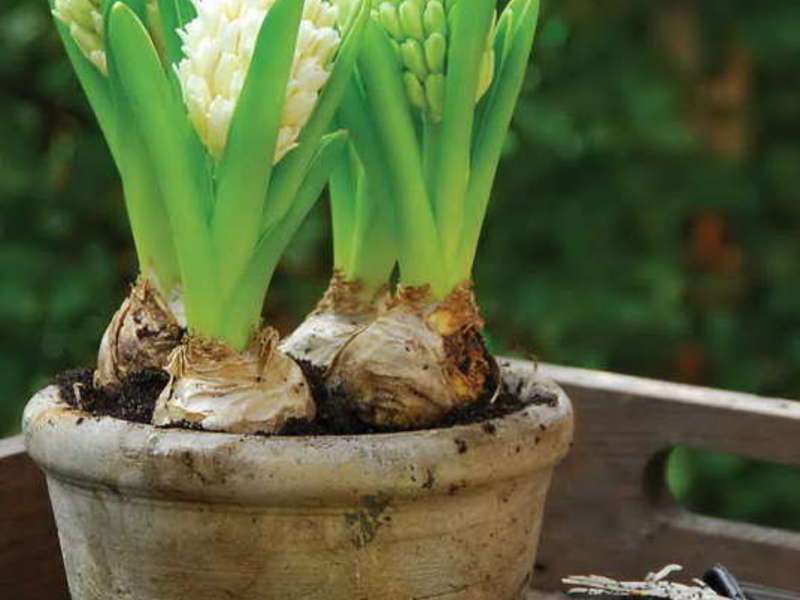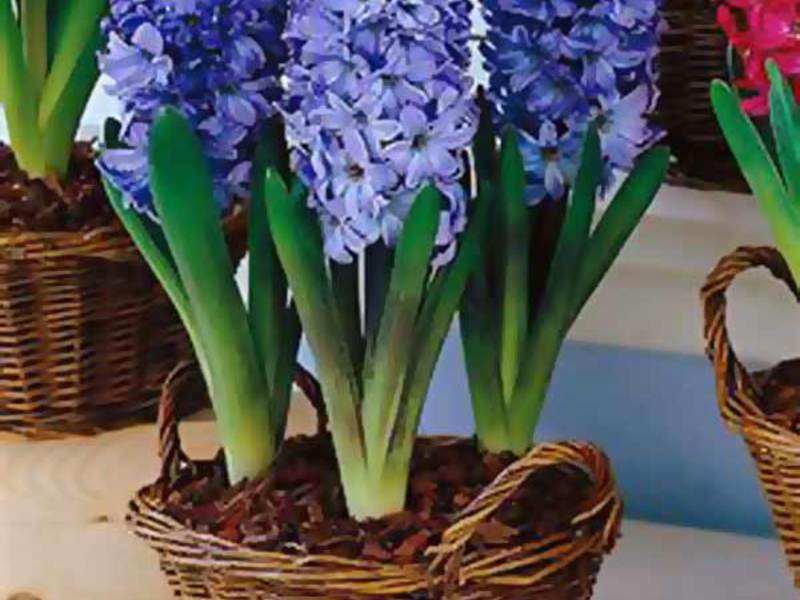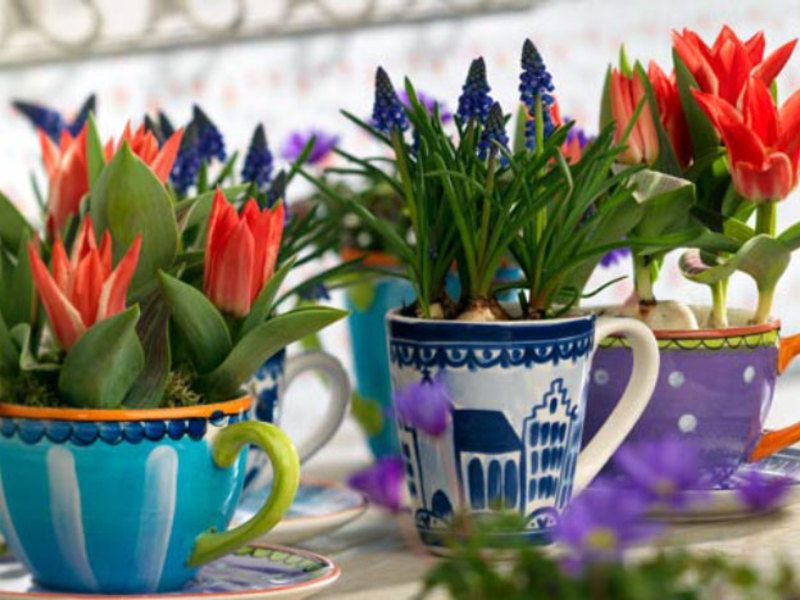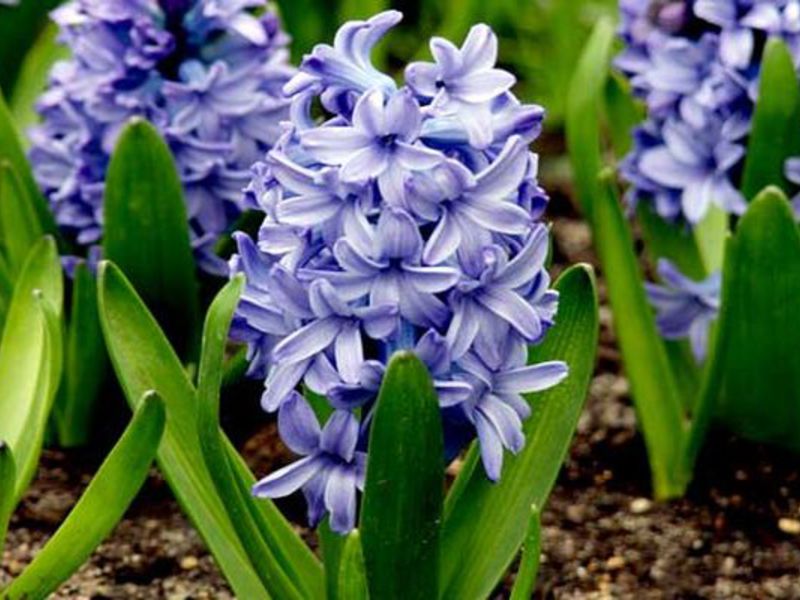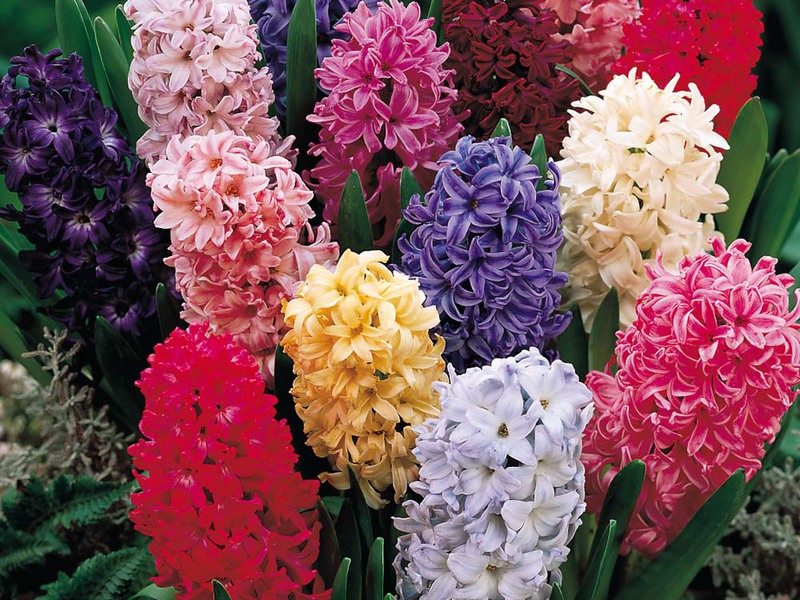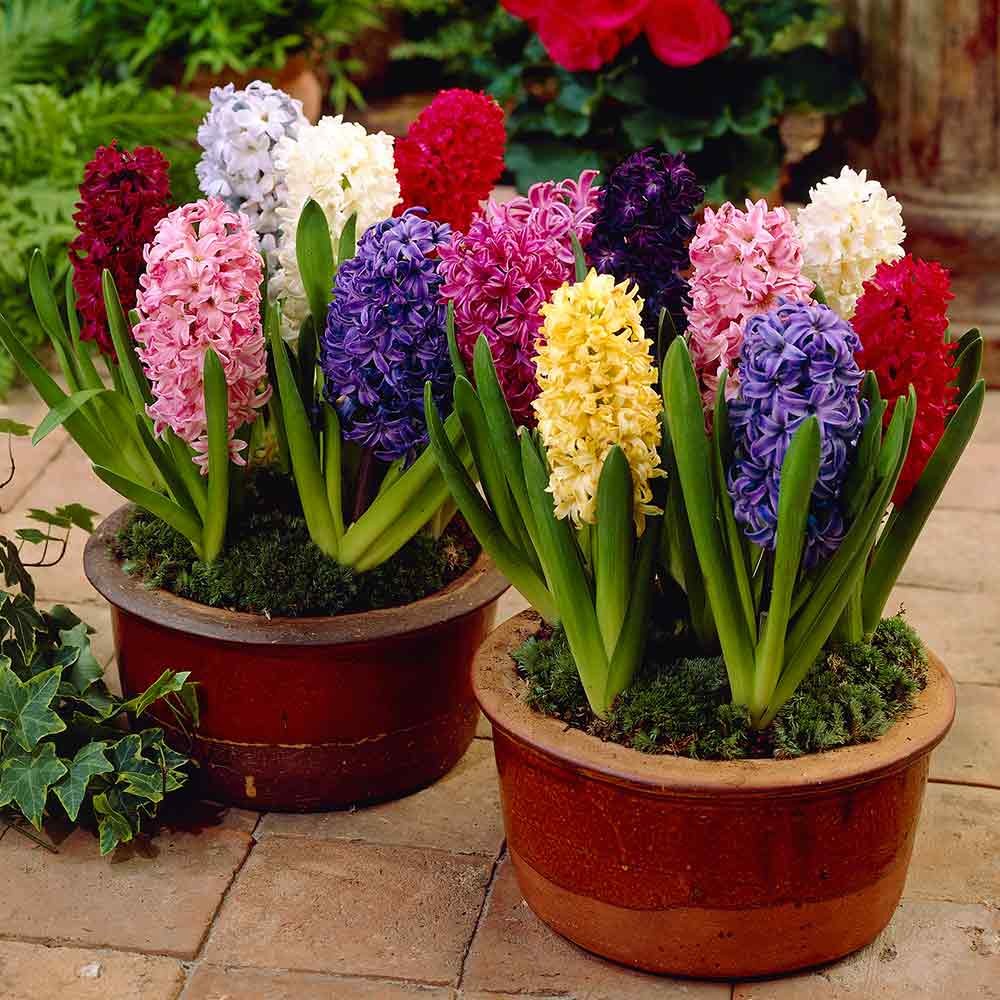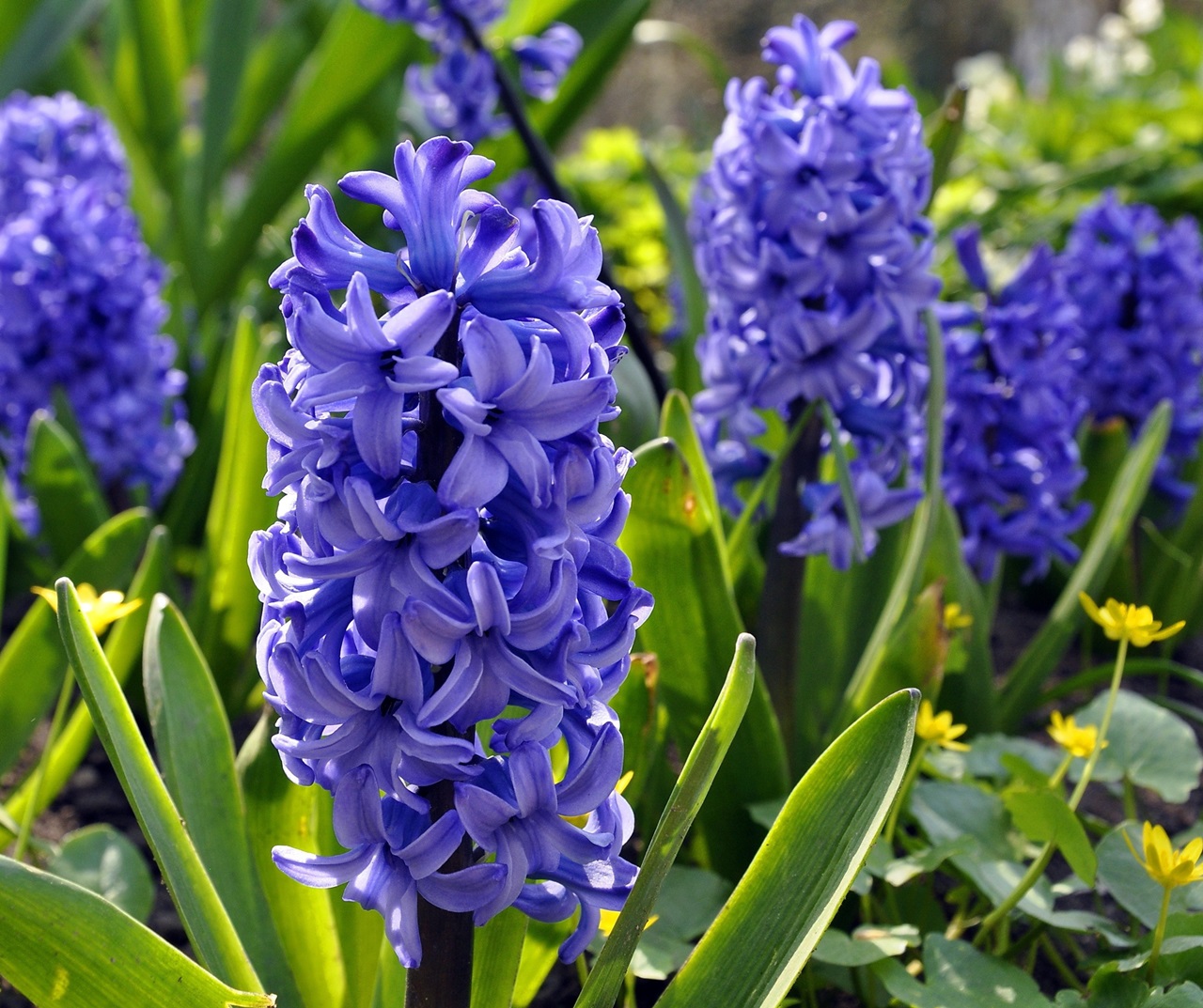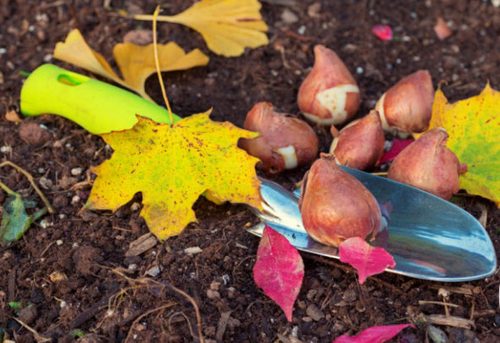When the winter cold is outside and the ground is covered with snow, blooming hyacinths adorn the room with pink, white, blue, yellow, purple, and scarlet colors. This bulbous, fragrant plant at home can bloom almost at any time of the year. To achieve its flowering, you need to know the rules for forcing bulbs and the peculiarities of growing a plant. Caring for hyacinths is simple, so many growers grow these flowers on their windowsill.
Content
Description and varieties of hyacinths with photos
The plant is a flower cob, growing up to 30 cm in length... A dense bulb consists of lower leaves, which surround the bottom of the bulb with their bases. The thick and very shortened part of the stem is a continuation of the bottom. Hyacinth flowers are bell-shaped, the edges of which are very pointed. After flowering, the green leaves and stem dry up, and a bud begins to form inside the bulb, which grows into an onion. In a young bulb, a stem with flowers that will bloom next year is already initially compressed.
The plant counts about two thousand species, each of which is beautiful in its own way. At home, oriental hyacinth grows best.
Oriental hyacinth - the best varieties
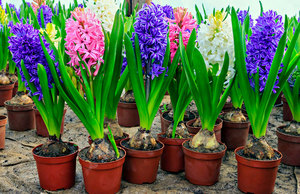 A perennial bulbous plant with spherical or globular bulbs grows up to 30 cm. Each bulb grows 5-8 bright green matte or shiny leaves. Fragrant flowers sit in the axils of the bracts on short pedicels. They can be bell-shaped or bell-funnel-shaped. Oriental hyacinth blooms with simple or double flowers of yellow, pink, blue, purple, blue or white. Plant varieties differ in terms of flowering time, size and color of inflorescences, height of peduncle.
A perennial bulbous plant with spherical or globular bulbs grows up to 30 cm. Each bulb grows 5-8 bright green matte or shiny leaves. Fragrant flowers sit in the axils of the bracts on short pedicels. They can be bell-shaped or bell-funnel-shaped. Oriental hyacinth blooms with simple or double flowers of yellow, pink, blue, purple, blue or white. Plant varieties differ in terms of flowering time, size and color of inflorescences, height of peduncle.
Most popular for cultivation in indoor conditions varieties:
- Ostara hyacinth grows up to 25-30 cm and has a loose inflorescence, the length of which reaches 11-13 cm.For three weeks, it blooms with bright purple-blue flowers with a diameter of 4 cm.
- Variety Amethyst is distinguished by pale purple dense inflorescences 9 cm long. The height of the plant itself reaches 25 cm. Each inflorescence consists of 18-20 flowers. Amethyst does not bloom for long - only seven or eight days.
- Hyacinth Rosalia grows up to 20 cm and blooms with pink flowers. Its narrow inflorescence of medium density has about 10-15 flowers with a diameter of 2 cm. The flowering period of Rosalia is very short.
- The Sunflower variety is distinguished by creamy, strongly double flowers that grow on an average density of an inflorescence 10 cm long. The diameter of each flower reaches 3.5 cm. The plant itself grows to 19-20 cm. It blooms for no more than two weeks.
- Hyacinth La Victoire is very popular among gardeners for its dense inflorescences, blooming bright red flowers. Plant height - 20 cm.
After looking at photos of different types of hyacinths, you will certainly want to grow this flower at home.
Hyacinth care at room conditions
It is not difficult to take care of the plant, but some rules must be followed.
Lighting
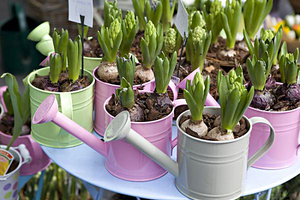 Hyacinth refers to light-loving plants... Therefore, in order for the hyacinth flower to bloom beautifully and for a long time at home, the plant needs good lighting. On cloudy days and in the evenings, especially in winter, the flower must be additionally illuminated with fluorescent lamps. Otherwise, the plant will shed young buds and leaves, or even wither. To ensure uniform growth of the plant, the flower pot must be periodically turned in different directions towards the light source.
Hyacinth refers to light-loving plants... Therefore, in order for the hyacinth flower to bloom beautifully and for a long time at home, the plant needs good lighting. On cloudy days and in the evenings, especially in winter, the flower must be additionally illuminated with fluorescent lamps. Otherwise, the plant will shed young buds and leaves, or even wither. To ensure uniform growth of the plant, the flower pot must be periodically turned in different directions towards the light source.
Temperature
At home, hyacinth needs ensure the temperature is within 20-22C... Drafts and sudden temperature changes are contraindicated for the plant. This could lead to his death. In the winter season, it is not recommended to put a flower pot next to heating appliances.
Support
Dense hyacinth inflorescences can bend from the severity of the flowers. To prevent this from happening, it is necessary to build a support next to the still unblown inflorescence.
Watering
Proper watering is the foundation of indoor hyacinth care. The plant requires timely watering. It is necessary to ensure that the soil in the pot is always slightly damp. This is especially important for the plant during wintering, growth and flowering.
Stagnation of water should not be allowed, since the bulbs can begin to rot, a fungal disease will develop, and the plant will die. Therefore, water is poured out of the sump immediately after watering.
It is impossible that during watering, water falls into the axils of the leaves, on the bulb and buds. This can provoke plant decay and the development of a fungal disease. Pour water near the edge of the pot.
Top dressing
Twice a month hyacinths need to be fed... For this, it is recommended to use special fertilizers for bulbous plants, which are sold in specialized stores.
Planting hyacinths at home
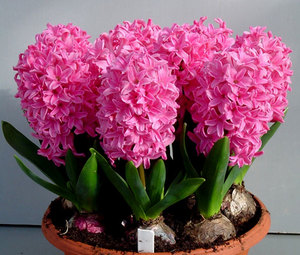 Forcing hyacinths should begin with the selection of healthy planting material of the right size. The bulb must be at least 5 cm in diameter. It is almost impossible to grow a full-fledged plant from a small bulb. The bulb chosen for planting must be firm and free from mechanical damage and decaying areas.
Forcing hyacinths should begin with the selection of healthy planting material of the right size. The bulb must be at least 5 cm in diameter. It is almost impossible to grow a full-fledged plant from a small bulb. The bulb chosen for planting must be firm and free from mechanical damage and decaying areas.
Before placing an onion in a pot, it must go through several stages:
- A faded and pruned bulb is dug out of the pot and placed in a humid room with an air temperature of 22-25 degrees.
- After two weeks, the bulb must be transferred to cooler conditions, where the temperature will be from 15 to 17 degrees.
The bulb can now be planted in a pot. For the hyacinth flower to bloom for the New Year, forcing should begin in September.
Planting in a pot
Drop-off containers can be purchased at the store. It shouldn't be too deep. At the bottom, the pot must have holes.
Drainage is placed on the bottom of the container, and then soil. Earthen mixture for planting hyacinths should consist of compost, leaf and turf soil, with the addition of peat and sand.
The bulb is placed in a pot filled with earth, pressed slightly into the ground and sprinkled with soil on top. Its tip should remain above the ground. If several bulbs will be planted in one container at once, then they need to be placed closely. However, it is impossible for the planting material to sway each other and the edges of the container.
Planted hyacinths are not immediately displayed in a permanent place. First, they need to create a dormant period that will last about two months. To do this, the pot is placed in a cellar, another cool room or in a refrigerator with a temperature of 5-7 degrees.Caring for the bulbs at this time consists in occasionally watering the soil, which should be moist all the time.
During this period, the bulbs will root well and the hyacinth will bloom at home.
The plant is transferred to a warm room after the bulbs have been thrown out a couple of leaves. The pot is placed in a bright place with an air temperature of no more than 15 degrees.
Hyacinths are placed in a permanent place only after the appearance of inflorescences.
Hyacinths after flowering
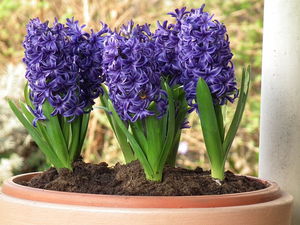 After the plant has faded, many do not know what to do with it next. In this case, everyone must choose for himself. The plant can simply be thrown away, or try to preserve and multiply.
After the plant has faded, many do not know what to do with it next. In this case, everyone must choose for himself. The plant can simply be thrown away, or try to preserve and multiply.
If you decide to leave the hyacinth bulb, then first of all you will need to cut off the faded peduncles. Further, while the leaves are still green, the plant must continue to be watered. The bulbs gain strength after flowering. At the same time, daughter bulbs can grow on them.
When the leaves dry on the plant, the bulb will need to be removed from the pot, shaken off the earth and put to dry for three days. If there are daughter onions, then they can be separated immediately after digging.
Faded bulbs for re-forcing usually not suitable at home. Therefore, in the fall, they are planted in the garden, where next spring they will delight with their flowering.
Reproduction of hyacinths
Hyacinths reproduce by daughter bulbs, of which no more than four can form per year. In order to immediately get a large number of children at home, experienced flower growers practice special techniques. They cut or cut the bottoms.
Such reproduction is carried out after a dormant period. First, the bulbs are processed in a 1% solution of potassium permanganate and dried at room temperature for three days. Only after that you can start the breeding procedure.
Cutting the bottom
This breeding method takes place in several stages:
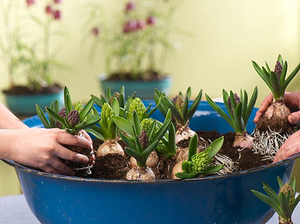 In the bottom, incisions are made, the depth of which should be 0.5-0.6 cm. Such incisions can be made from two to four.
In the bottom, incisions are made, the depth of which should be 0.5-0.6 cm. Such incisions can be made from two to four.- The bulbs are placed in boxes with cuts upwards and stored for 2-3 months at a temperature of + 21C. During this time, from 8 to 15 large and strong children should be formed.
- Now the bulb with children needs to be planted in a cool greenhouse.
- After the young bulbs grow up, they will need to be planted for growing. You need to take care of them in the same way as for adult plants.
After about two to three years, the plant will throw out its first peduncles.
Cutting the bottom
This breeding method differs from the previous one only in that the bottoms are not cut, but cut out. This is done with a teaspoon. Processing and storage is carried out in the same way. However, as a result of daughter bulbs, although small, it turns out from 20 to 40 pieces. Such onions ripen a little longer - within 3-4 years.
In order for a beautiful hyacinth flower to become an excellent addition to your interior, and you can admire its flowering, you need to choose the right place for it and organize the right care. With a little patience and a lot of desire, you can even propagate and grow hyacinths yourself at home.
